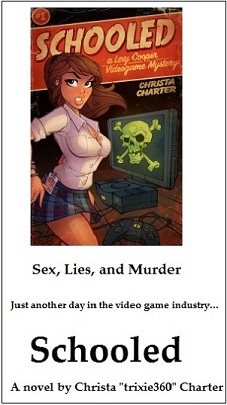Castlevania: Lords of Shadow – Mirror of Fate is a game whose problems can primarily be summed up with the title. It’s a bizarre hodgepodge of the old 2d metroidvania games with the console reboot’s mechanics, and the result is an overblown, muddled mess of a game.
Castlevania (I’m not typing that title out again) lets you play the alternate reality version of several of the Belmonts and Symphony of the Night’s Alucard in a world where they have terrible polygonal models and use combat crosses, not whips. Castlevania follows the mold of its predecessors in giving you some interesting backdrops to look at, providing a 3Dish perspective on a sidescrolling platformer. Unfortunately this version runs like garbage. Framerate concerns mean you never face more than two or three enemies at a time, and in those situations the game bogs down noticeably, with the 3D effects on or off. There are some cool depth of field effects to be seen, but I found myself turning the 3D off more often than not just to avoid bumping the screen into a blur while I mashed the X button on the 3DS.
Prior, good, Castlevania games have all been based on challenging combat that was as much about positioning as it was timing. In Konami’s newest iteration you walk into an empty room and mash the X button until all of the enemies die and you move on. Your whip can cover most of the screen in a single swipe, and enemy combat is trivially easy. There are dodge mechanics and God of War-esque finishers, but for the first few hours of the game it was just mashing X, often while not moving at all, until a couple later enemies started doing enough damage to make the occasional jump or dodge important. The only respite from the absurdly easy combat are the boss battles, but the game’s clunky nature and framerate problems make these affairs more frustration than challenge. The game is also checkpointed every three or five minutes, including at different stages of boss battles (dying will bring you back to the last half of a boss fight and replenish your life and resources). It’s as if the developers realized you’d never want to do any part of this game a second time.
Beyond the whip there are four other skills at any given point, but all of them are either passive or appear in such limited numbers (early in the game Simon had a grand total of five axes…) that they simply can’t break up the game’s monotony. Your character will level up and gain some new moves (all of which are performed by either mashing or holding down X or Y), but your progression immediately resets upon moving to a new chapter (and character model). It’s a weird design decision that makes character progression feel useless; the lack of consistent progression means no incentive to find the game’s collectibles or even explore much of the levels.
There’s a host of other things to talk about in relation to Castlevania, and none of them are good. The (cart-based) game has noticeably long loading times, and when coupled with the framerate concerns it makes the entire affair seem like a rushed port to the 3DS. One of the few shining spots in the game comes in the form of cel-shaded cutscenes, but they only serve to underline how unpleasant the game’s normal character models look. Lengthy jumping puzzles just point out how slow and clunky moving your guy is, as do enemies who throw projectiles that are all but unavoidable because of the game’s sluggish responses to input.
There are a number of fans of Castlevania, particularly the DS and GBA titles that Konami threw out by the seeming dozen in the past years. After playing Mirror of Fate I expect those players will be glad there are so many of those other games out there. If this is the way the series is going fans will be replaying those old games quite a bit.









